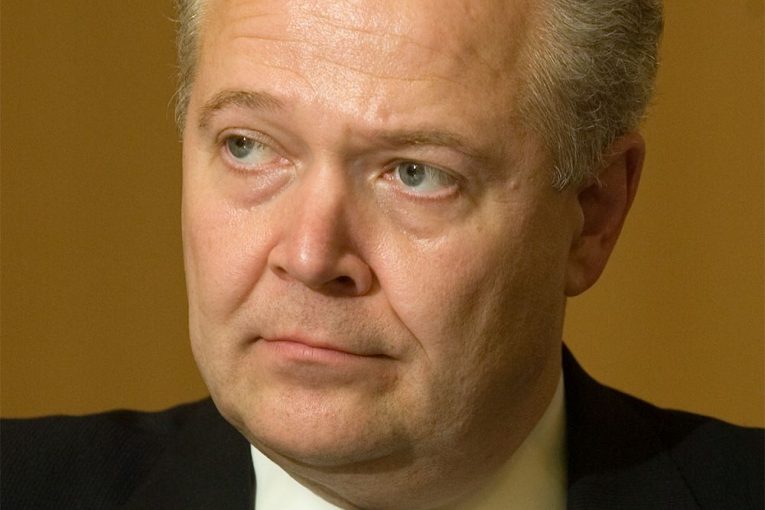
Winding down a 38-year career that led him to the CEO’s office at Canadian Utilities, Siegfried Kiefer has seen intense change blow through Alberta’s energy sector.
The National Energy Program and soaring interest rates in the 1980s.
Deregulation of Alberta’s electricity sector in the ’90s.
The global financial crisis of the 2000s.
Today, he sees a more daunting transformation ahead, one that surrounds the global energy transition, climate concerns and the role of companies and consumers as Canada seeks to reach “net-zero” greenhouse gas emissions by 2050.
“Challenges always look bigger when they’re in the windshield as opposed to in the rear-view mirror, but it is, in my mind, a very challenging prospect,” Kiefer, 62, said in an interview Thursday.
“We will need to change the way we behave, the way we think about energy, the way we use it, in order to accomplish our long-term goals. And change is a difficult thing to enlist on society as a whole.
“But if everyone can understand that it has the benefit of the planet at its root, then we have a chance of allowing that to take hold and make a difference.”
Environmental, social and governance (ESG) issues have played a central role in a number of online annual meetings conducted in the Canadian energy sector this week.
Kiefer, who announced his
upcoming retirement at the AGM of Canadian Utilities
on Wednesday, spoke about the energy transition ahead and the issues facing consumers and the company.
Canadian Utilities, which is 52 per cent owned by ATCO, is already on a pathway to change within its global electricity business and retail energy segment, and its natural gas transmission, distribution and storage business.
Two years ago, the company sold off a fleet of fossil fuel-based, electricity-generation facilities operating in Alberta and other provinces. The decision has led to an almost 90 per cent drop in direct greenhouse gas emissions at the business.
The company is actively working on developing hydrogen projects in Canada and Australia. Canadian Utilities installed the country’s largest off-grid solar farm, which is reducing the use of diesel for power generation in the northern community of Fort Chipewyan.
The issue of net-zero emissions is a complex one for companies across the energy landscape.
Earlier this month, Ottawa set a new goal to slash emissions in the country by up to 45 per cent below 2005 levels by the end of this decade.
The search for solutions is complicated by the need to keep energy affordable, the desire of developing countries to grow their economy and the overall drive to decarbonize.
“It really takes co-ordination across the globe to fix the climate change and the emissions challenge. And the solution is not a straightforward or a narrow-focused thing,” said Kiefer.
“But when I look at carbon, carbon emissions and decarbonization, it impacts virtually everyone.”
These issues are gaining greater prominence as companies talk to shareholders about their ESG performance.
Calgary-based firms such as Enbridge, TransAlta, Cenovus Energy and Canadian Natural Resources have adopted targets of net-zero emissions by 2050.
“Net-zero is a priority for investors and the finance sector as well, and they’re responding to that,” said Binnu Jeyakumar, the Pembina Institute’s clean electricity director for Alberta.
“I see it as the start of having a meaningful conversation.”
At Imperial Oil, the conversation intensified this week at its annual meeting when investors rejected a shareholder motion to adopt a target of net-zero emissions by 2050.
The motion from Aequo Shareholder Engagement Services, for Quebec-based Batirente, was rejected by 86 per cent of shareholders — including Exxon Mobil, which owns almost 70 per cent of Calgary-based Imperial.
Yet, the proposal garnered the backing of 58 per cent of minority investors.
“The signal is that shareholders of Imperial and, in general, large institutional investors, are concerned about climate change,” Francois Meloche, Aequo’s director of corporate engagement, said Wednesday.
Like many oilsands operators, Imperial has already lowered its emissions per barrel, down by more than 20 per cent since 2013. It has also set a target of a 10 per cent reduction by 2023, compared to 2016 levels.
“It is very easy to make big promises to 2050, but we want to ensure our goals are credible and measurable,” CEO Brad Corson said at the meeting.
At the country’s largest petroleum producer, Canadian Natural Resources president Tim McKay pointed out Thursday the company has cut its emissions intensity by almost a third since 2012.
Canadian Natural is planning to update its mid-term targets later this year, following the federal government establishing new national goals for 2030.
“With the announcement . . . (of) increasing the goals for Canada, obviously we’ve got to re-look at things and understand how aggressive they want to be and where it takes us,” McKay said in an interview.
At the annual meeting of Canadian Utilities, executive chair Nancy Southern said the path to net-zero emissions is a monumental undertaking that will require significant investment in technology and government policy to back it up.
“The issue of cost, how much and who pays for our net-zero future, needs to be urgently addressed,” said Southern, who will reassume the role of CEO upon Kiefer’s retirement in July.
Kiefer noted the energy industry is changing at an accelerated pace today. Companies must meet the expectations of customers, “and, increasingly, those expectations are around clean energy.”
“I really believe the ambitions or the aspirational goals that everyone is talking about — they are great to talk about but they are tremendously difficult to implement,” said Kiefer, who began his career with ATCO and its subsidiaries in 1983.
“We strive hard to strike that balance around reliable, affordable and sustainable energy for our customers.”
Chris Varcoe is a Calgary Herald columnist.
You can read more of the news on source
